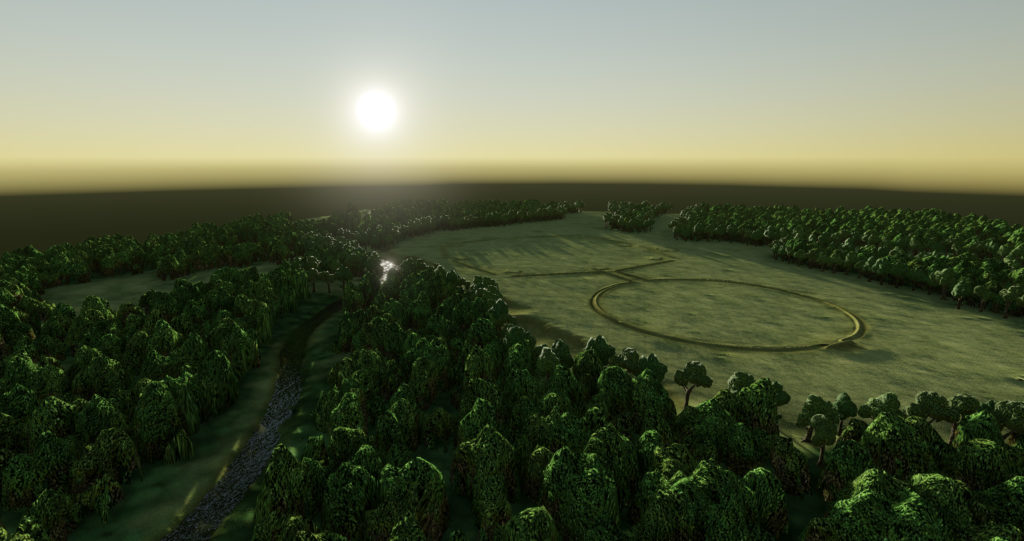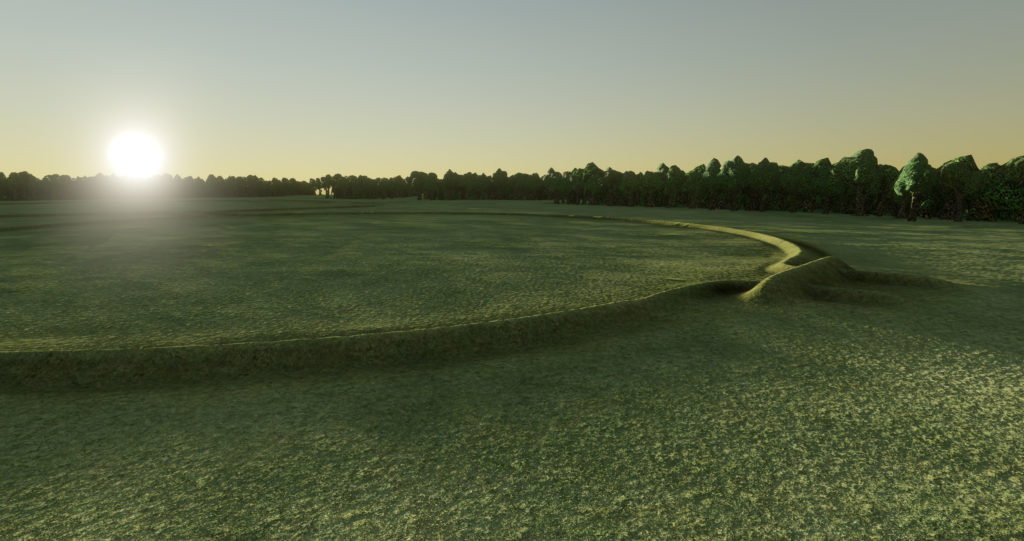
Ball State University and Ohio History Council
Sponsored by the Office of Digital Humanities, National Endowment for the Humanities
The public will be able to explore the prehistoric Newark Earthworks in Ohio the way they appeared 2,000 years ago. Funded by the National Endowment for the Humanities’ Office of Digital Humanities, this interactive 3D simulation is under development at Ball State University.
Ball State’sApplied Anthropology Laboratories (AAL) and the Institute for Digital Intermedia Arts (IDIA Lab) are creating a web-based virtual world that interprets the earthworks in their era of construction. The project is led oy Kevin Nolan, director and senior archaeologist at AAL and project co-director John Fillwalk, senior director of IDIA Lab.Interactive features will include accurate celestial alignments. The sky will be simulated with accurate celestial bodies using data from NASA’s Jet Propulsion Laboratory to allow users to view the stars, planets, moon, and sun as they appeared 2000 years ago.

Already a National Historic Landmark, Ohio designated the Newark Earthworks as “the official prehistoric monument of the state” in 2006. Spread across four miles in what is now present-day Newark, Ohio, mounds and walls are constructed to record significant celestial alignments on the landscape, including the 18.6-year lunar cycle. The earthworks created community for the Hopewell People and provided sacred spaces for religious rituals and ceremonies related to their society. The Newark Earthworks comprise the largest set of geometric earthen enclosures in the world, built by the Hopewell People between A.D. 1 to A.D. 400 to serve a variety of cultural and spiritual purposes.
The project is a collaboration between Ball State and the Ohio History Connection, with support and partnership from several federally recognized American Indian tribes, including the Eastern Shawnee Tribe of Oklahoma and the Shawnee Tribe.